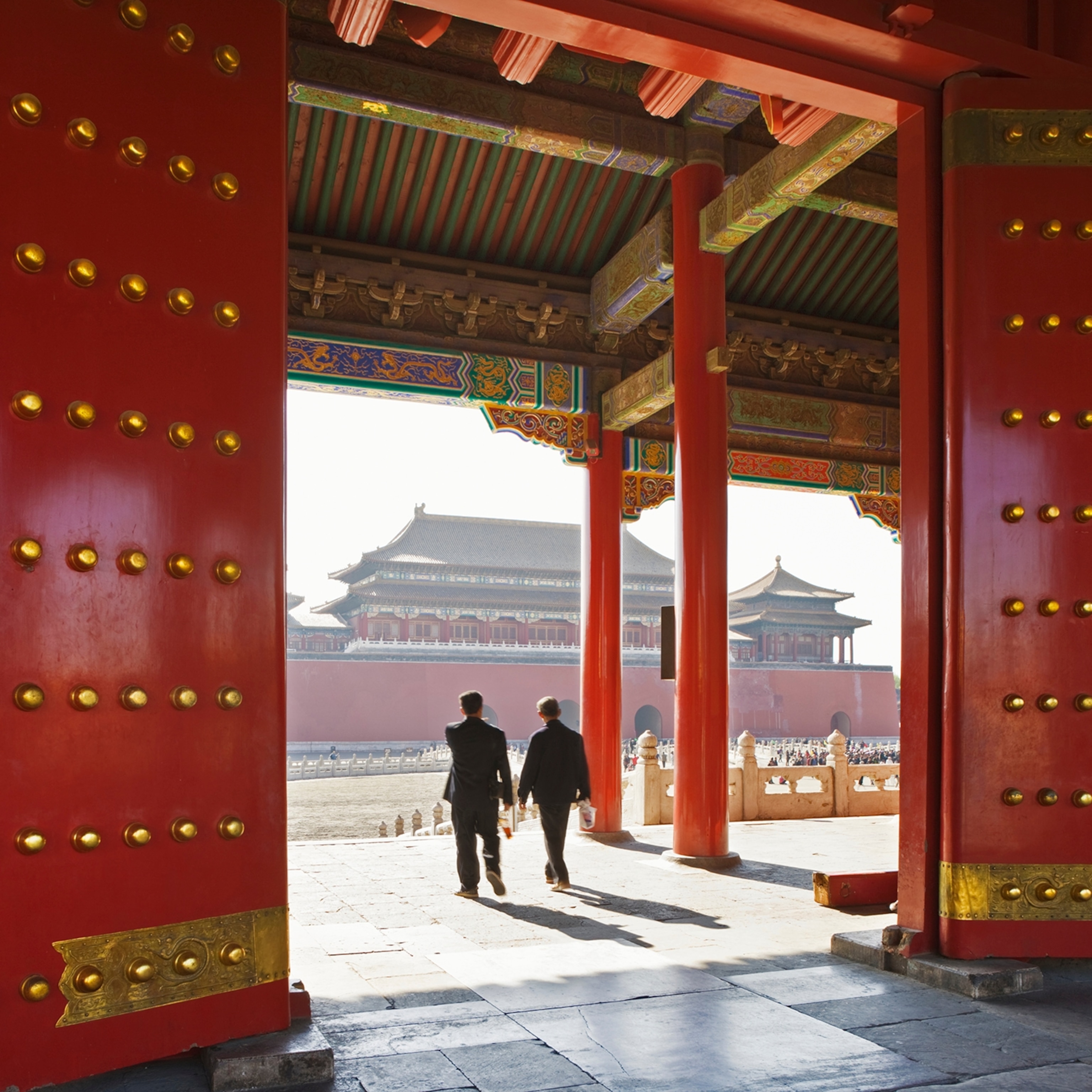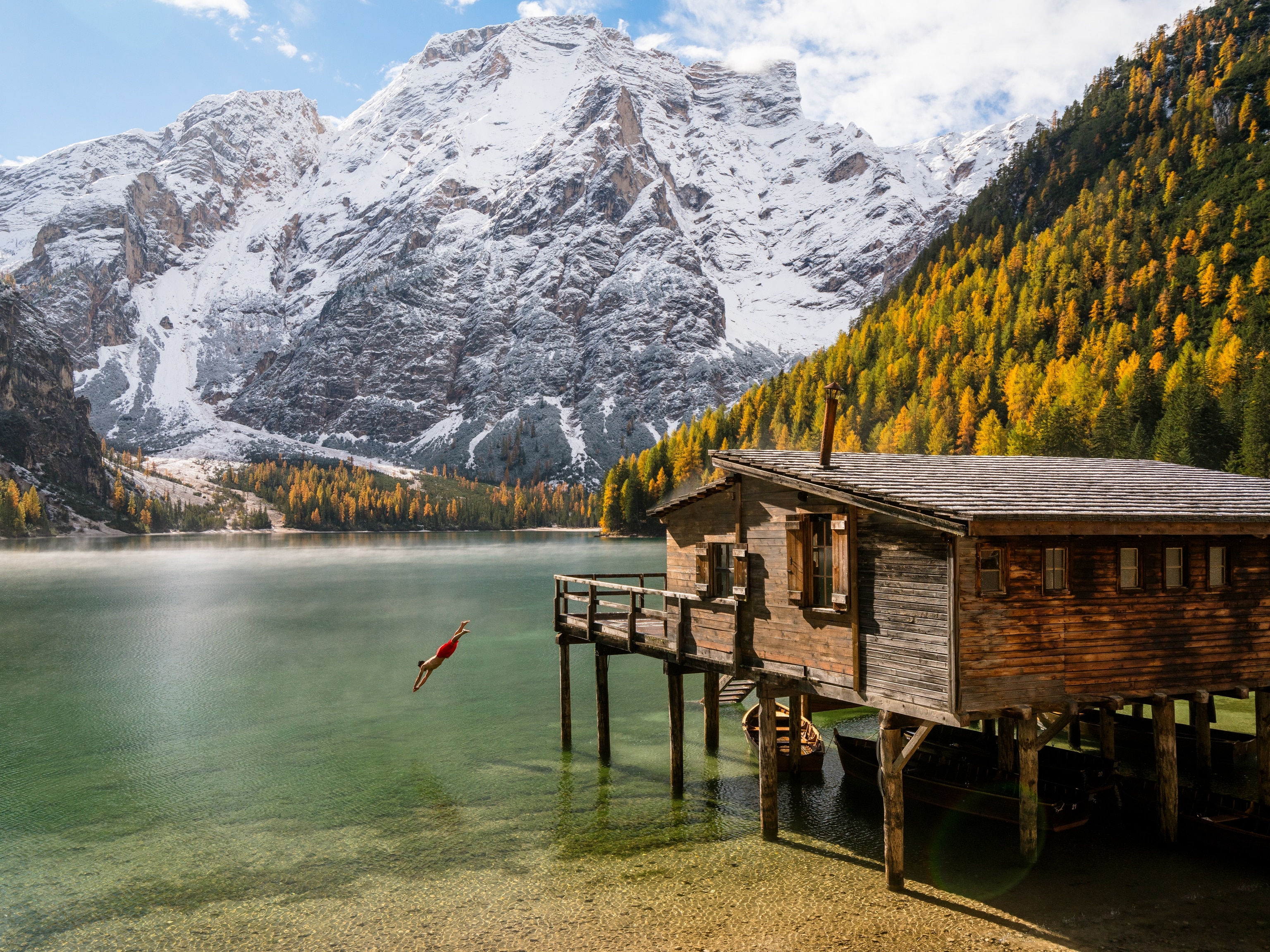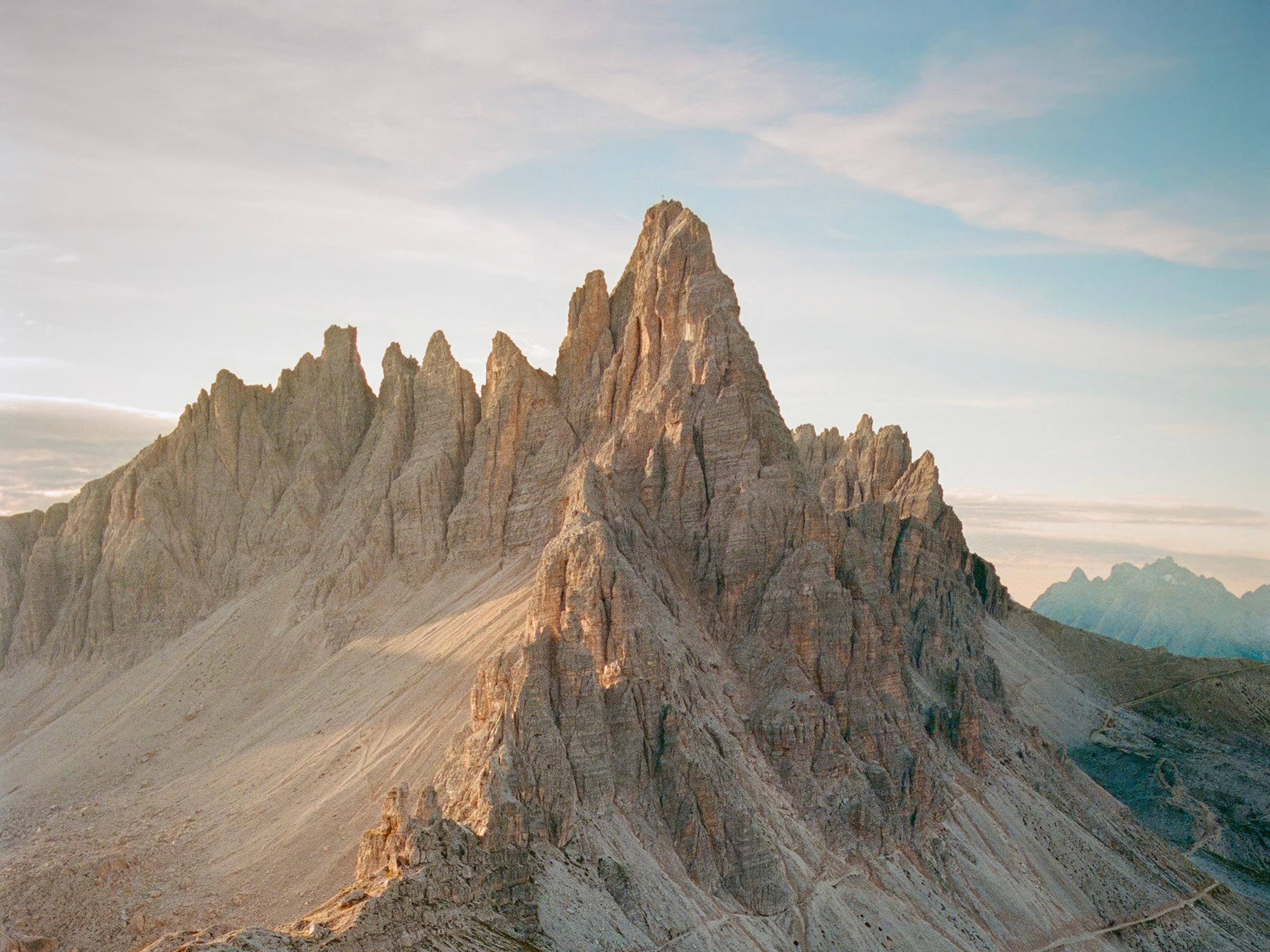
Explore Cambodia’s ancient stone city
With its awe-inspiring temples, colorful cafés, and placid waterways, Siem Reap is a jewel of Southeast Asia.
Siem Reap is a cheerful city that embraces travelers like old friends. This region was the site of successive capitals of the Khmer Empire from the ninth to the 15th centuries. The ruins, collectively known as the Angkor Archaeological Park, are located about four miles north of the city center. The 150-square-mile complex, which includes the famous Angkor Wat Temple, is Siem Reap’s biggest tourist draw. But in recent years, this ancient yet dynamic destination has been attracting travelers to stay longer and explore its other facets. A few days in this Cambodian city shows that Siem Reap straddles the best of both worlds—a glorious past and a vivid present. The best way to get to know it is to explore it slowly, one story at a time.
Day 1: Temples galore
There’s no better way to begin a trip to Siem Reap than to rise well before dawn to explore the Angkor Archaeological Park. A tuk-tuk (auto rickshaw) will get you there in 20 minutes, but you can also reach the complex by bicycle, riding down wide roads flanked by lush forest. Pack your breakfast and give the UNESCO World Heritage site at least four to five hours. Despite the daunting crowds outside, the temples look sublime silhouetted against the rising sun and pink-orange sky.
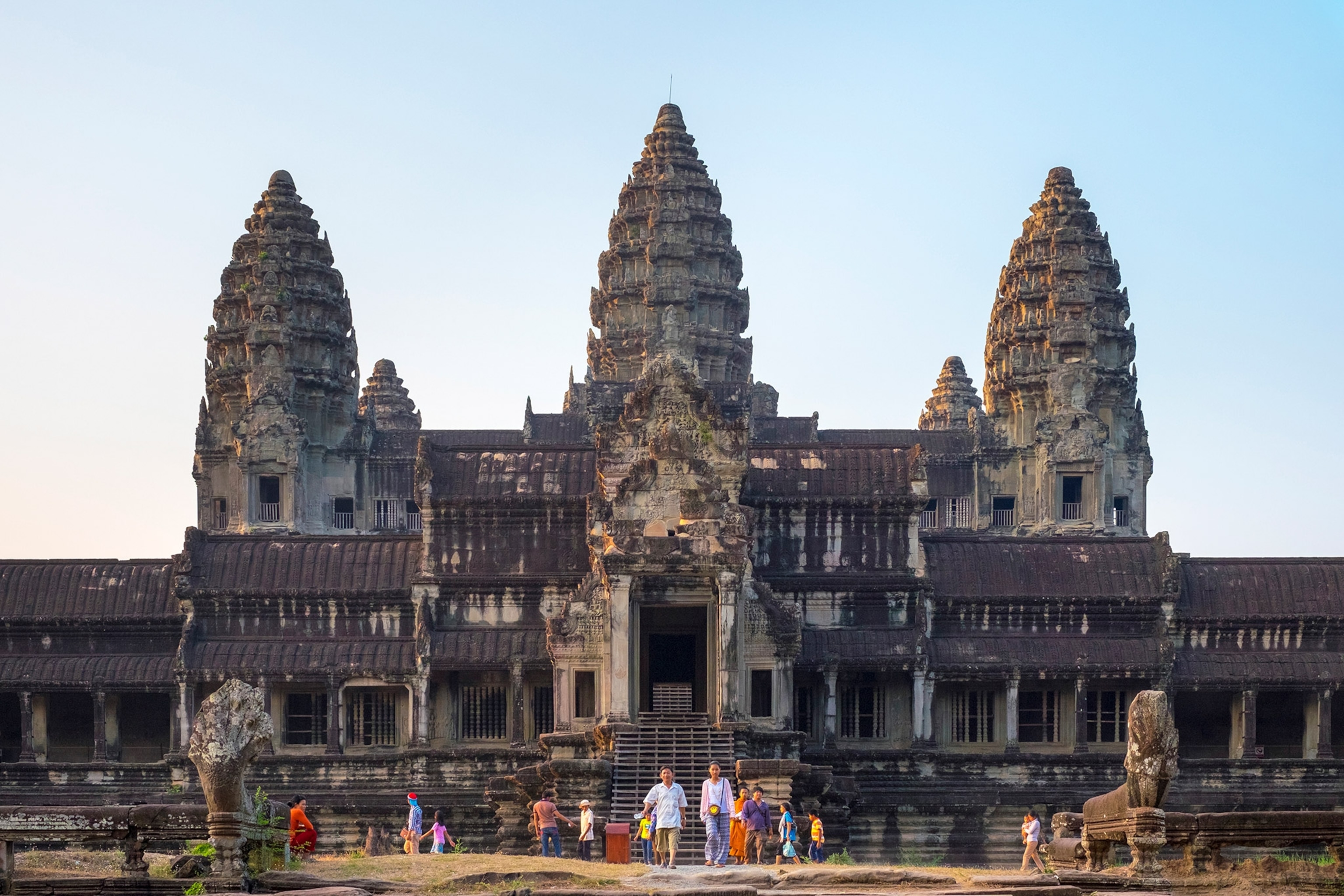
Spread over a vast area, the site has jaw-dropping remains of sandstone temples, canals, and reservoirs built by the Khmers between the ninth and 14th centuries. Angkor Wat, the most popular temple, is the largest religious monument in the world, covering nearly one square mile. It was built as a Hindu temple by King Suryavarman II in the early 12th century, and is dedicated to Lord Vishnu. In the 14th or 15th century it was converted into a Buddhist site and continues to be an important place for Theravada Buddhists. Inside, the walls come alive with gorgeous carvings of scenes from the Ramayana and Mahabharata. On another wall, 88 carved Asuras and 92 devas seem to grunt with effort in an illustration of the Hindu legend of the Churning of the Ocean of Milk. Nearby, carved apsaras smile mysteriously as they flaunt elaborate hairdos.
Near Angkor Wat is Angkor Thom, the sprawling 3.5-square-mile complex that was the last capital of the Khmer Empire. Its most splendid remaining structure is the Buddhist Bayon Temple, the towers of which are carved with 216 gigantic, beatifically smiling faces.
From Angkor Thom, venture east on the Little Circuit of stunning monastic complexes and smaller temples. Ta Prohm temple, featured in the 2001 movie Lara Croft: Tomb Raider, is a tourist favorite. The colossal banyan tree roots that embrace the ruins are the main draw. Big Circuit, a cluster of temples further northeast of Angkor Thom, has the Preah Khan and Pre Rup temples, each wonderful in its own way.
Wind down on Pub Street, Siem Reap’s center of cool, for a hearty lunch at French bakery and café Blue Pumpkin, a large, sunny joint known for cakes, sorbets, and ice creams. Try the Cambodian kuthiew, a traditional white noodle soup with pork or chicken, as you lounge on couches on the upper floor. Blue Pumpkin also serves delicious steaks, burgers, and pastas.
Grab a coffee at the nearby New Leaf Book Café and dive into Cambodia’s history. This non-profit bookstore carries a vast collection of books in various languages. Powerful memoirs offer insight into the Khmer Rouge genocide, such as First They Killed My Father: A Daughter of Cambodia Remembers by Loung Ung and When Broken Glass Floats: Growing Up Under the Khmer Rouge by Chanrithy Him.
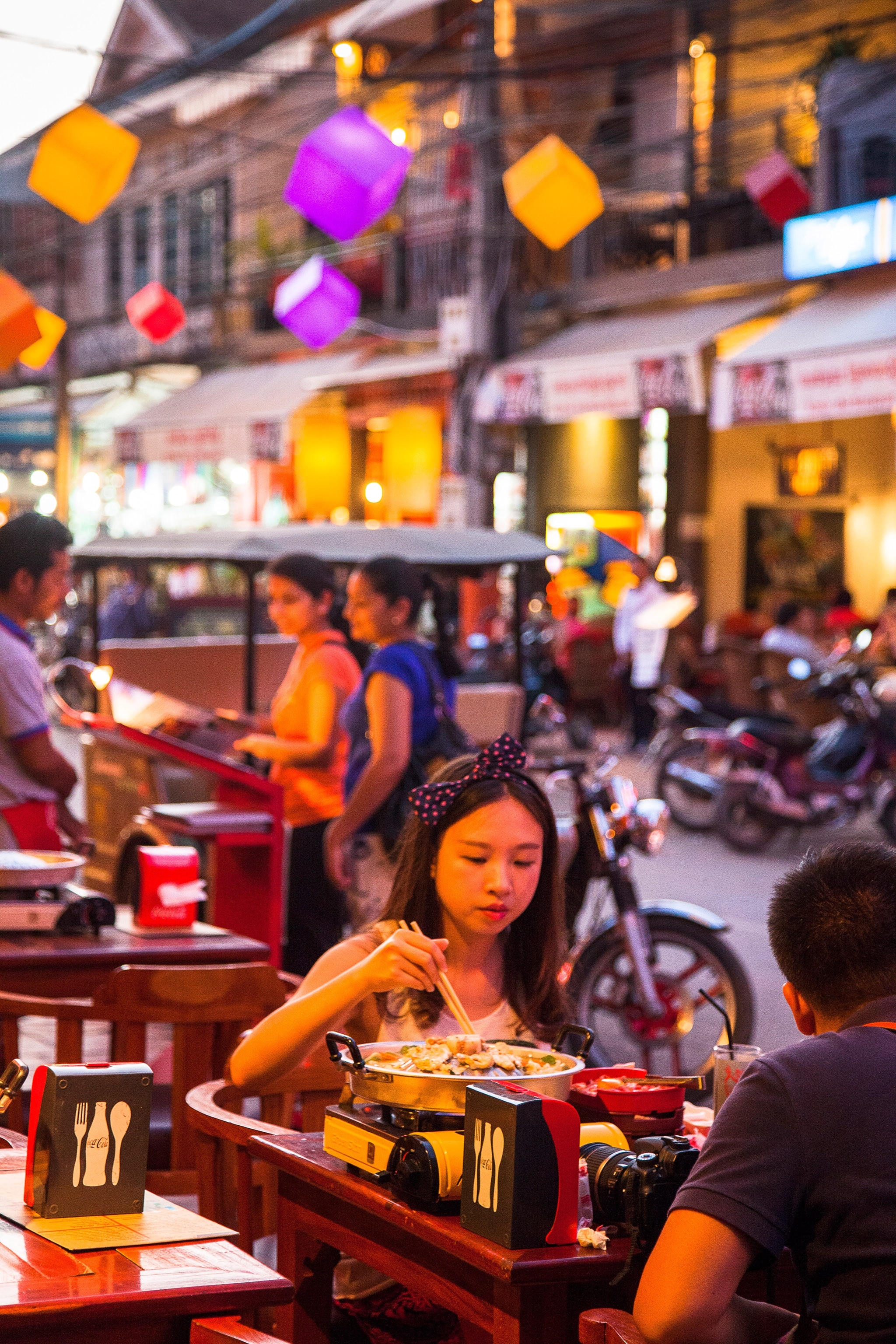
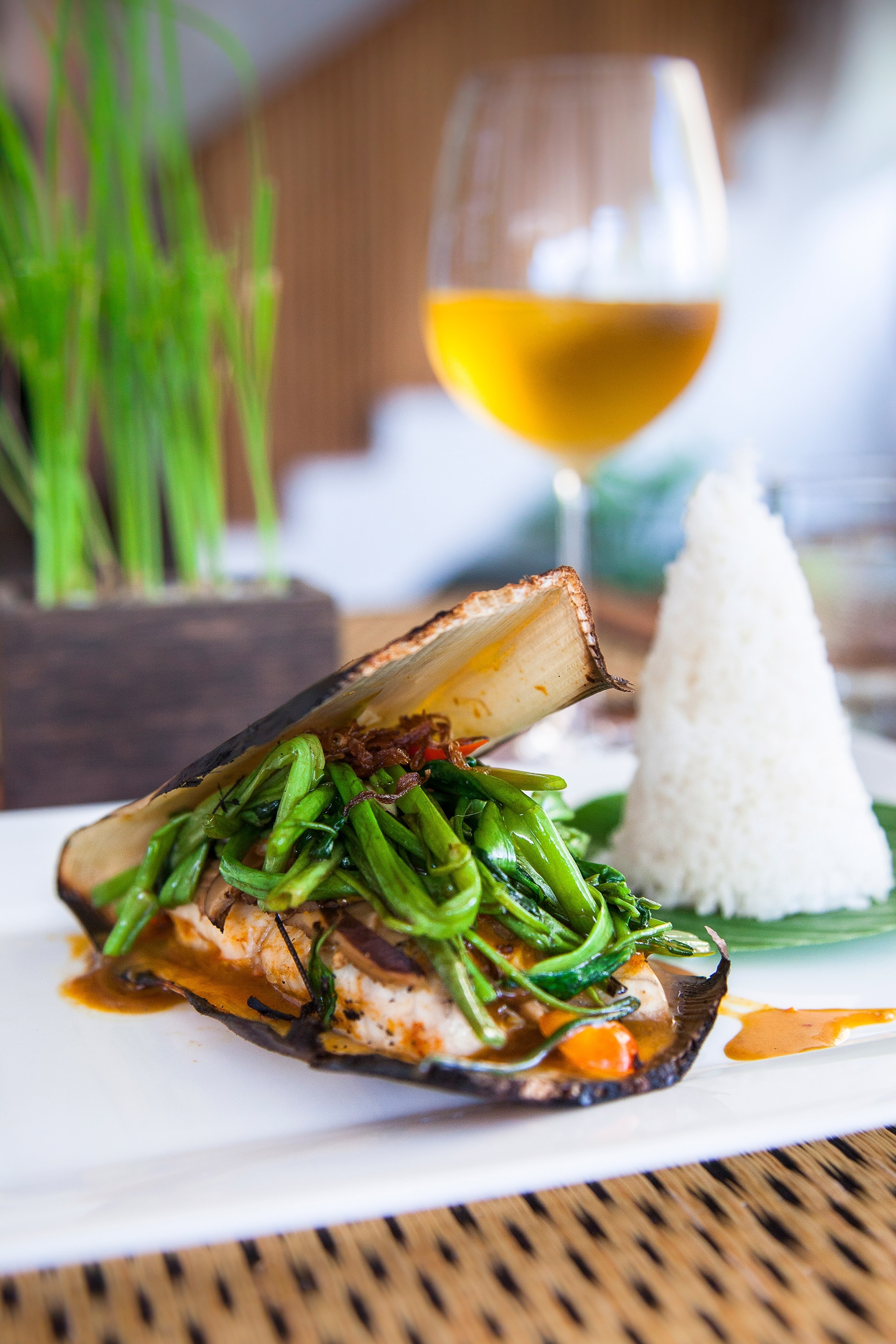
If you still have energy, join a three-hour Khmer cooking workshop at Le Tigre de Papier Restaurant. Class begins with a stop at Psa Cha market to source ingredients for the three-course meal. Discover the core of Cambodia’s cuisine by learning to make amok, the traditional Khmer dish of curried fish, chicken, or beef steamed in banana leaves. Also learn how to make prahok, the fermented fish paste behind almost every traditional Khmer dish. And the best part: You get to eat what you cook.
Reward yourself with a massage at the Seeing Hands Massage, where therapists with vision loss offer excellent oil massages.
Day 2: Heart of stone
Get off the beaten track and head to the ruins of Banteay Srei, located about one hour from Siem Reap’s city center. Leave just after sunrise to explore this 10th-century red sandstone temple dedicated to Lord Shiva. Bas-reliefs of fierce guardian monkeys and toothy mythical creatures seem to monitor temple activity. An elaborate carving depicts a story from the Mahabharata in which Lord Krishna and Arjun burn down the Khandava forest. The awe-inspiring detailing of the scene shows Lord Indra riding his three-headed elephant and valiantly trying to protect the forest by unleashing rainfall. Restaurants around the temple complex serve Khmer and continental breakfasts.
The Cambodian Landmine Museum is a 15-minute drive from the temple. Its founder, Aki Ra, was a child soldier during the Cambodian genocide. Exhibits show landmines he dismantled, a chilling reminder of the ones still buried beneath the Cambodian countryside. Various disarmed grenades and unexploded aerial bombs are stark evidence of a dark chapter in history. The museum also supports and provides education to children affected by landmines.
Back in Siem Reap, head to Taphul Road, a 10-minute walk from the city center, for a leisurely lunch at Sugar Palm. The restaurant has a pleasant bar where travelers can swap stories, and diners looking for quiet can claim tables overlooking sugar palms. Both their tofu and prawn amok are cooked to perfection.
An important part of Siem Reap’s resurrection lies in its various youth intervention programs. The Les Chantiers Écoles is a school dedicated to teaching the city’s underprivileged youth wood- and stone-carving techniques, traditional silk painting, and lacquerware. Its Artisans d’Angkor gift shop sells stone and wood reproductions of Angkor-era statues and furnishings.
Head to Pub Street for the evening. Here, locals and travelers alike relish meals at elegant French and Italian restaurants. Tapas bars overflow with full-bodied sangrias and great conversation. For a memorable gastronomic experience, try a traditional Cambodian barbeque at Khmer BBQ Restaurant in Old Market, just off Pub Street. The barbecue offers a choice of meats that are cooked on a flaming, metal grill at the table and are accompanied by a hotpot of delicately spiced noodles or rice with broth.
Pub Street’s Temple Club and Angkor What? Bar are the places to go for thumping music and boisterous parties. To experience a different side of Siem Reap’s nightlife, visit the Angkor Night Market, where about 250 brightly lit shops sell everything from Khmer art to jewelry, handicrafts, silk apparel, lacquerware, and more. While you mull over your next bargain, take a cocktail break at the forest-themed Island Bar.
Day 3: Wonders on the water
Head to Tonle Sap, Southeast Asia’s largest freshwater lake and a UNESCO biosphere reserve. The lake changes in size with each season and is at its largest during the monsoon (May to October). Floating villages line the lake, where everything—homes, shops, restaurants, schools, hospitals—teeters just above the water on stilts. Chong Kneas, a popular access point to the lake, is about nine miles from Pub Street, but it is something of a tourist trap. Kompong Phluk is a less crowded option with a flooded forest, located about 20 miles from the city. Birders should make the trek to Kompong Khleang (31 miles from the city), where they can see the spot-billed pelican and greater adjutant stork. Tonle Sap is also one of the most fertile inland fishing grounds in the world, so stop by one of the many floating restaurants for seafood.
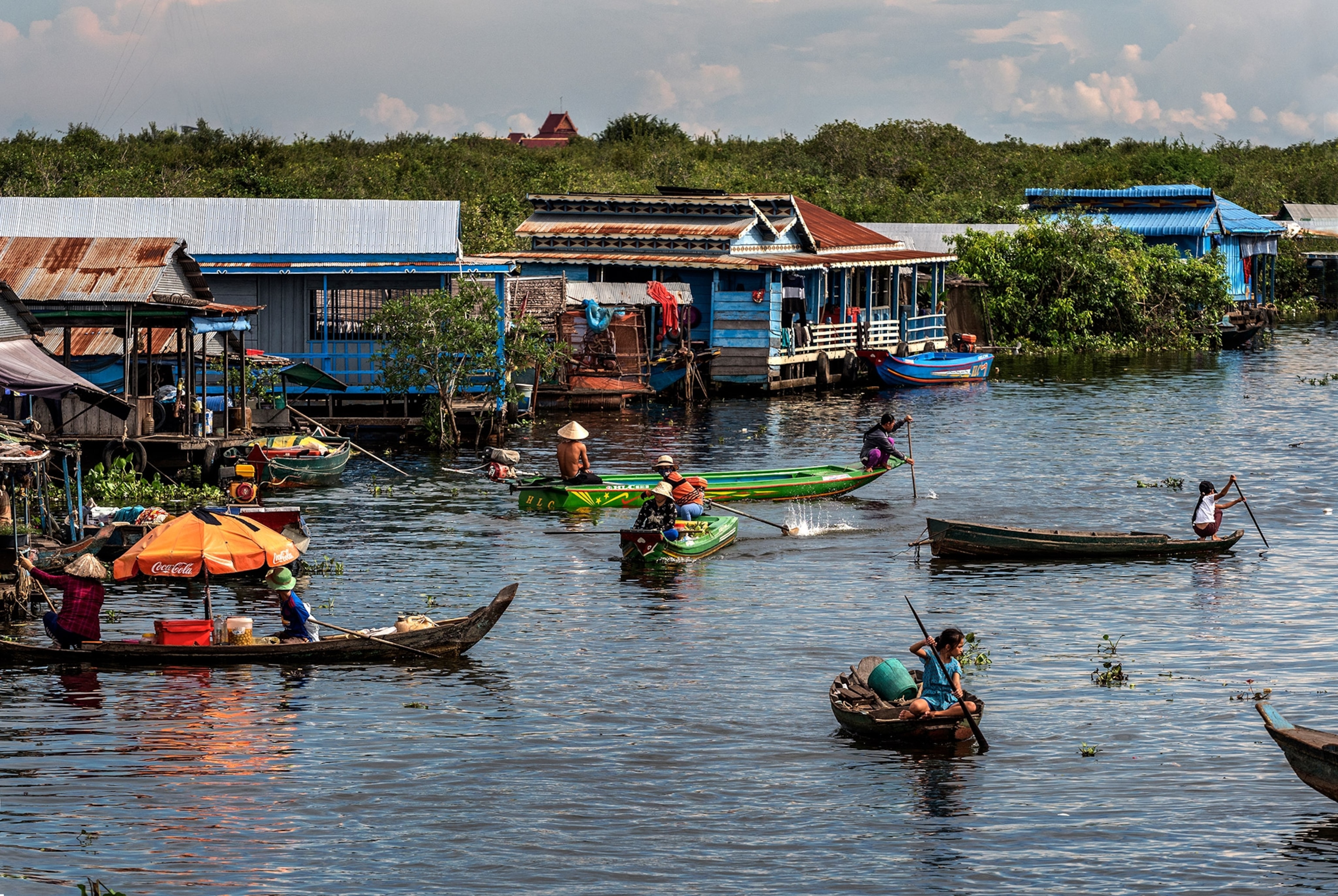
After visiting Tonle Sap, spend the afternoon cycling through the forest around the Angkor Archaeological Park, where you can explore faraway ruins and smaller temples without map or agenda. An alternative is to visit the Angkor National Museum in the city. Its exhibits provide a glimpse of the art and culture of the Khmer empire. One of its rare artifacts is the Sumedha Hermit, a late 12th-century statue of the Buddha lying prone. Ancient stone slabs with Khmer and Sanskrit inscriptions list the names of Khmer slaves, details of land disputes and settlements, and paeans to kings and gods. An audio guide tour, videos, and slide shows throughout the different galleries provide more information. The museum shop also stocks pretty silk stoles and miniature Khmer sculptures.
For dinner, skip Old Market and Pub Street and head to Wat Bo Road, which is coming into its own with an eclectic mix of restaurants and bars. For Khmer and other Asian specialties, eat at Viroth’s Restaurant,which has lovely outdoor seating.
- National Geographic Expeditions
